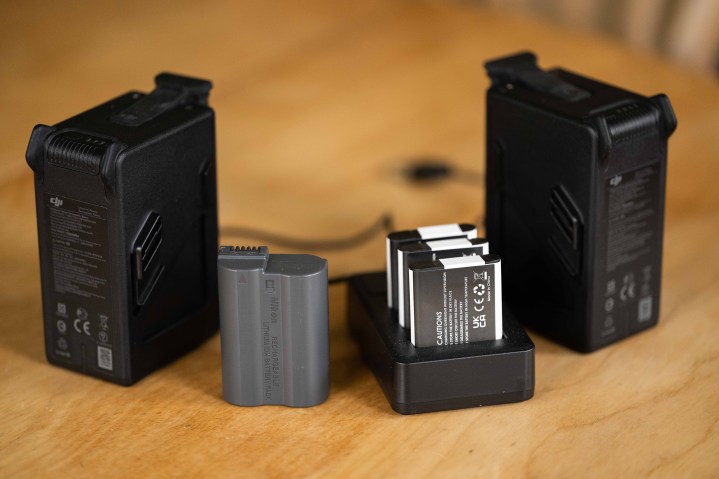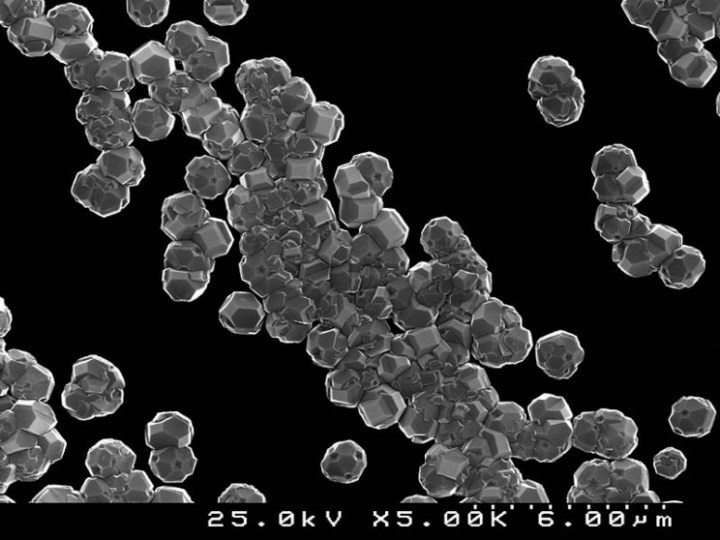Science fiction has become reality as we carry phones that act like small computers in our pockets. Yet even as technology advances, we are held back by the power source behind the technology, limiting the advantages these devices represent. From the moment we turn on a device, the clock is ticking as the battery degrades and loses capacity. On a daily basis, making sure a battery is charged and ready to go is a hassle, and we all forget to plug it in overnight from time to time.
For me, as a content creator and with cameras, drones, tablets, microphones, and other devices to keep charged, it can become quite a chore to ensure all my electronics are functioning when I need them. To make matters worse, in many phones and other mobile devices, replacing the battery is difficult or downright impossible. But a solution is on the horizon. One day soon a battery revolution will arrive using an unlikely combination of nuclear waste and diamonds.
Why today’s phone batteries are a problem

From the beginning to the end of our electronics’ life cycles, batteries pose many problems. Mining lithium and other components of the batteries we currently utilize is a dirty, destructive business — as is the refinement of these rare materials. As demand increases, these impacts will afflict more and more of our wild landscapes with potentially disastrous consequences.
Once our batteries die, they and the devices they power all-to-often end up rotting in landfills. Sometimes our electronic waste is shipped overseas, where it is then inexpertly salvaged or burned, and ends up in the air and water. Only a small percentage of our discarded electronics are actually, responsibly, recycled. If only batteries didn’t degrade so quickly, such waste could be dramatically reduced.
How nuclear tech could be our solution
Of all the promising new battery tech being worked on today, the most exciting has to be nuclear batteries. Not only would such batteries potentially last dozens, hundreds, or even thousands of years, but they would also generate their own power from radiation. In the not-so-distant future, our batteries might not only outlast our phones and possibly exceed our own life spans many times over, but they would never need to be recharged.
As if the concept of nuclear batteries couldn’t sound any crazier, the ones that might one day find their way into our phones and cars would actually be made of artificial nanodiamonds. To call the science behind these nanodiamond batteries complex is an understatement. Essentially, in the simplest terms possible, radioactive elements are extracted from nuclear waste and encased in diamonds using chemical vapor deposition. The diamond then acts as a transducer to transform the radiation into electricity.

In addition to longevity and self-charging capability, nuclear batteries would revolutionize smartphone design. They would make charging ports unnecessary, so phones could be fully waterproofed and made much tougher than ever before. It’s also conceivable, as artificial diamonds become cheaper to produce, that our phones may soon be diamond-coated and thus practically indestructible.
Beyond phones, these nuclear batteries could potentially power every electronic device we use today. From smartwatches and earbuds to cars, drones, and even robots. Once you start thinking about it, you realize that nanodiamond batteries have the potential to change many aspects of our technology that are being held back by the limitations of our current, deeply flawed battery design.
The company trying to make nuclear batteries a reality
One of the leading companies developing this technology is NDB, an acronym that stands for “Nano Diamond Batteries.” In the words of NDB CEO Dr. Nima Golsharifi, when interviewed for an episode of the Energy Cast podcast: “Speaking metaphorically, it’s similar to solar panels; the difference is that NDB generates electricity using the radiation from radioactive materials instead of the sunlight”
Diamond batteries are also a possible solution to the long-neglected issues surrounding the disposal of waste from nuclear fission power plants. Enormous quantities of this highly dangerous material exist all over the world, and storing or disposing of it is incredibly expensive. However, this waste is also rich in energy, and it’s what powers the nuclear batteries NDB is developing.

As Dr. Golsharifi puts it: “NDB solutions, and the purpose of our company, is to make good use of these byproducts and resolve the nuclear waste issues, and in turn help the environment by promoting the nuclear energy which is a clean source, and in turn supporting the society by creating a sort of circular economy.”
Of course, a logical question you might well ask is whether or not these batteries are safe. There’s a stigma around anything to do with nuclear power, which is a potential roadblock to the adoption of this technology, but Dr. Golsharifi believes that this fear can be overcome through education: “Not many people know that most smoke detectors contain radioactive material; still, they have them at home without any problem.”
The radiation from nuclear batteries is safely locked away within those minuscule diamonds. “We have a transducer locking system which prevents the isotope from being accessed in bulk and being used for purposes other than the NDB’s power source. We specifically do this by the nanoscale ion implantation of radioisotopes within our structure, and this allows us to meet various consumer safety requirements” explains Dr. Golsharifi.
NDB has put extensive research into ensuring that their batteries are safe enough to use in products like phones and cars. In many ways, NDB batteries do not produce emissions or harmful radiation. Nuclear batteries composed of almost indestructible diamonds are probably safer than lithium-ion batteries, which have been known to explode and catch fire.
Another pertinent question is cost. After all, we’re talking about a product that is made of both diamonds and nuclear materials. However, the cost is already falling, from $2.4 million per kilogram all the way down to $40,000 in 2018 (according to Dr. Golsharifi). NDB expects the price to drop still further with mass production, starting out being more expensive than lithium-ion and decreasing over time, to eventually be competitively priced with lithium-ion.
Even if they are more expensive initially than traditional batteries, wouldn’t you be willing to pay extra for a phone you never need to recharge? A car that never needs to be refueled? Devices that not only never run dry, but which sell their juice back to the grid, or lower your home power bill?
Nanodiamond batteries never need to be recharged, last longer than the devices they would power, are safe for use in consumer products, and would help deal with the age-old question of what to do with our nuclear waste.
Nuclear gadgets coming in 2023
So when might we expect to see nuclear batteries hit the market? NDB already has conducted proof of concept tests and intends to have a working product ready by 2023. Arkenlight, another nanodiamond battery company, already has low-power nuclear batteries in operation in monitoring equipment in the Stromboli Volcano and a U.K. nuclear waste site. It will be a bit farther in the future before the first nanodiamond batteries make it into our smartphones, and probably much longer before they are powering our cars.
Even if we end up waiting five to 10 years for this technology to become commonplace, that is no time at all for such a revolutionary advancement. Of course, it’s also worth acknowledging how unpredictable bleeding-edge tech like this can be. However, given that the science behind it is sound, and that minor implementations of these batteries are already out in the field, I see a good reason to be optimistic that one day soon our batteries will last longer than our phones, and never need to be recharged.




